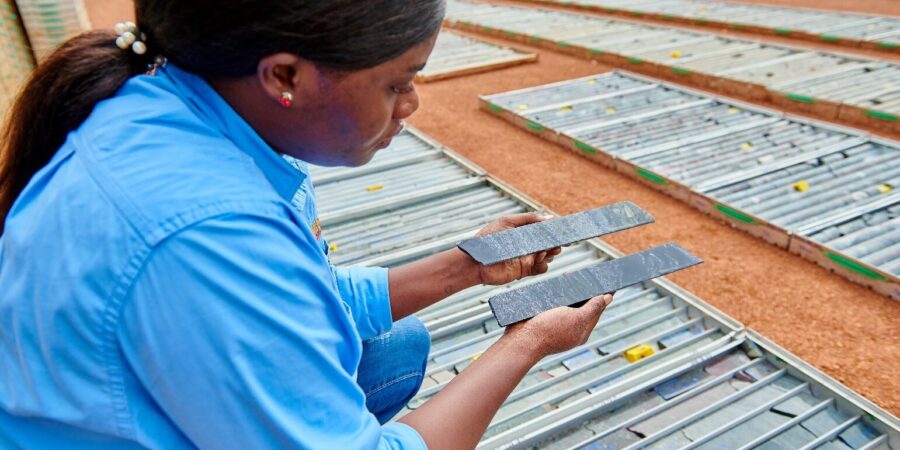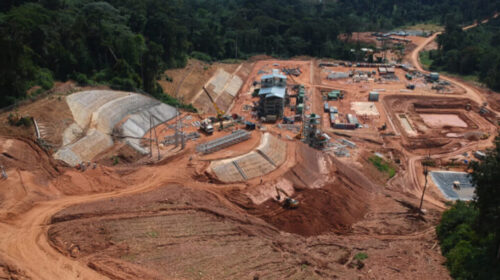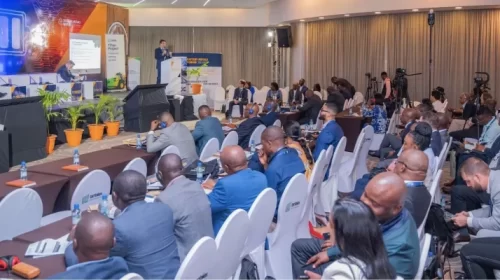Ivanhoe Mines Announces the KITOKO Sedimentary Copper Discovery in Western Foreland in the DRC
Kitoko discovery includes drill hole DD008 intersecting 5.19 metres true width, grading 11.64% copper, at a 1% copper cut-off
Kitoko is Ivanhoe’s fifth high-grade sedimentary copper discovery in the DRC
Mineralogical characteristics of Kitoko are most similar to those of the tier-one Kakula copper orebody
Discovery zone traced over a 1.9-kilometre strike and open in all directions
Expanded drilling program continues around Kitoko and other Western Foreland targets
Ivanhoe Mines Founder and Executive Co-Chair Robert Friedland and President Marna Cloete are excited to announce today that the company has made a significant high-grade copper discovery on recently acquired joint venture licences in the Western Foreland, west of the Kamoa-Kakula Copper Complex in the Democratic Republic of Congo (DRC). Ivanhoe Mines’ geological team have aptly named the discovery KITOKO, which means “beautiful” or “gift” in several local languages in the DRC.
The Kitoko discovery confirms the presence of a significant high-grade copper mineralizing system between 1,000 meters and 1,140 metres below the surface. Kitoko fine-grained copper mineralization is hosted in near flat-lying siltstone of the lower Grand Conglomerate, like that observed at the tier-one Kamoa, Kakula, Makoko and Kiala deposits. Also, like these deposits, the Kitoko mineralization is bottom-loaded with the highest copper grades occurring at the base of the mineralized zone. As mineralization occurs at the Kakula orebody, the lower section of the mineralized zone features occurrences of high-grade chalcocite and bornite copper sulphide minerals, with chalcopyrite copper sulphide mineralization more prevalent towards the top (see Figure 3). The currently defined mineralized zone is trending southwest over 1.9 kilometres of strike, with a dip extent of between 600 meters and mineralization remains open in all directions (See Figure 4).
The Kitoko discovery is approximately 25 kilometres west of the ultra-high-grade Kakula Mine, and five kilometres south and southeast of the Makoko deposit and is located inside a package of newly acquired joint venture licences in the Western Foreland. The new package of licences increases Ivanhoe’s highly prospective Western Foreland land position by 10% to 2,654 square kilometres.
Under the terms of the joint venture that covers the 247 square kilometres of newly acquired licences, Ivanhoe has an initial interest of 10% with an earn-in right to increase its ownership by funding ongoing exploration activities. Ivanhoe expects to make further exploration spending commitments in 2024, to increase Ivanhoe’s interest to 60%.
Selected drill holes at the Kitoko Copper Discovery include:
- DD003 (the Kitoko discovery hole) intersected 3.37 metres (true width) of 3.54% copper, at a 1.0% copper cut-off, from a downhole depth of 1,077 metres.
- DD004 intersected 6.43 metres (true width) of 4.92% copper, at a 1.0% copper cut-off, from a downhole depth of 1,071 metres.
- DD006 intersected 4.18 metres (true width) of 3.60% copper, at a 1.0% copper cut-off, from a downhole depth of 1,065 metres.
- DD007 intersected 6.79 metres (true width) of 3.35% copper at a 1.0% copper cut-off, from a downhole depth of 1,089 metres.
- DD008 intersected two separate high-grade mineralized zones: 3.09 metres (true width) of 3.67% copper from a downhole depth of 1,118 metres, and a higher grade zone of 5.19 metres (true width) of 11.64% copper from a downhole depth of 1,135 metres, at a 1.0% copper cut-off.
Ivanhoe Founder and Executive Co-Chair Robert Friedland commented:
“Ivanhoe’s latest high-grade discovery of Kitoko confirms the effectiveness of our exploration model for identifying tier-one copper mineralization across the Western Foreland. Our proprietary knowledge is the result of over 20 years of in-depth geological research in this previously unexplored terrain.
“This year’s drilling success proves that our geological team has the ability to unearth further major copper discoveries across the Western Foreland. We are fortunate to control such a large exploration land package with tier-one potential, in the identical geological domain as the Kamoa-Kakula Copper Complex, the world’s greenest and fastest-growing major copper mining complex.
“Our geologists are excited to find very high-grade copper very similar to the massive tier-one Kakula orebody, now discovered in the deeper parts of the Western Foreland basin that remains completely unexplored. When combined with the recent Mineral Resources at the nearby Makoko and Kiala deposits, the Kitoko discovery marks a turning point for our strategy in the Western Foreland. We are excited to explore options for near-term, high-grade copper production across our majority-owned licenses.
“Importantly, the Lobito Rail Corridor to the nearest coastal port in Angola runs across this emerging world-class copper district… The railway and port will provide strategic advantages in terms of inbound and outbound transport and lower carbon emissions. In fact, the Lobito Corridor will dramatically improve the economics of the entire DRC mining industry, which is powered primarily by hydroelectricity. The Lobito Corridor will lower mining cut-off grades and increase the amount of economically recoverable copper that our world desperately needs from the Western Foreland… and exploration properties in both Angola and the DRC will become far more attractive due to the very existence of the Lobito Corridor.
“The government of the Democratic Republic of Congo strongly encourages exploration efforts, and Ivanhoe’s team are proud to lead the way. Ivanhoe’s talented and dedicated people possess sophisticated exploration technologies and invaluable intellectual property, together with a global track record of success. We are committed to unlocking the full potential of the DRC’s endowment and we envision world-leading and ultra-green copper production across the Copperbelt for generations to come.”
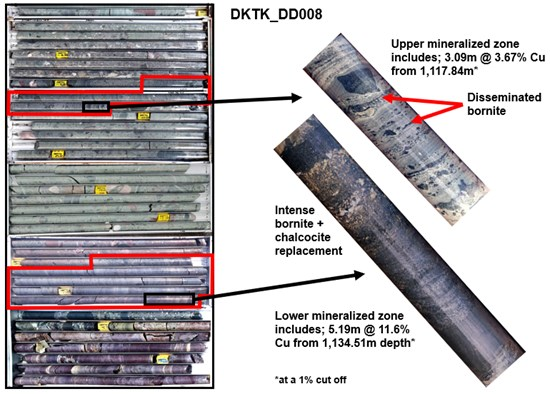
Figure 1. Diamond core from hole DKTK_DD008 at Kitoko, showing two zones of high-grade mineralization. The lower zone returned 5.19 metres true width at a grade of 11.6% copper, at a 1% copper cut-off. The upper zone also returned significant grades of copper mineralization.
Table 1 (below) contains a complete list of assay results for the drill holes completed to date at Kitoko, at both a 1% and 2% copper cut-off. For drill holes DD005 to DD011, independent assays are pending; only “Niton” X-ray fluorescent (XRF) results are currently available. The reader is cautioned that Niton XRF readings are not the same as laboratory assays and are not an estimate of resource grades disclosed in accordance with NI 43-101. However, based on more than 2,000 holes drilled to date at the neighbouring Kamoa-Kakula Copper Complex, as well as on the Western Foreland Exploration Project, a high degree of correlation between Niton XRF readings and assay results is evident. The company is confident that these data readings are highly useful in confirming and shaping the next stage of the exploration drilling program pending final assay results.
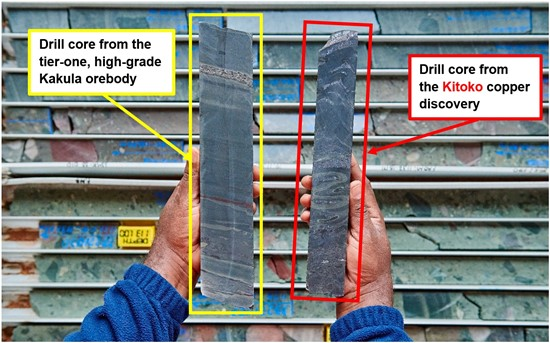
Figure 2. (L-R) Comparison of drill core from the Kakula orebody, alongside drill core from the Kitoko discovery. The Kitoko core displays many similar mineralization characteristics to Kakula core.
Extensive exploration history and experience in Ivanhoe’s Western Foreland fundamental to discovery
Ivanhoe began exploration activities on the extensive Western Foreland land position in July 2017. Initially, activities were focused on the construction of all-season access roads, bridges and the development of new camp facilities. In parallel, Ivanhoe undertook airborne and ground-based geophysical surveys and revisited previously acquired geophysical and geochemical data sets. Targets, and subsequent discoveries, were identified first based on analysis of geological models from the airborne and ground geophysics, as well as surface and sub-surface geochemical sampling, and ultimately confirmed by diamond drilling. By year-end 2023, the company expects to have completed more than 166,000 metres of diamond drilling since 2017, including 36,000 metres completed year-to-date.
The newly discovered high-grade mineralization at Kitoko is associated with siltstone and inter-banded gritty layers of sandstone, formed in periods of relatively low sediment input into the basin, within a large package of Grand Conglomerate diamictite. The siltstones contain early pyrite that reacted with ore fluids to deposit copper. Multiple packages, or layers, of pyritic siltstones, have been identified and are exploration targets when they occur in prospective basin locations.
The Kitoko discovery is hosted in the Grand Conglomerate overlaying the Kibaran basement directly, whereas the Kakula, Kamoa, Makoko and Kiala deposits occur where the Grand Conglomerate is underlain by Mwasha sandstones. This highlights the potential for copper mineralization across a variety of underlying aquifer conditions and therefore increases the proportion of the Western Foreland that is prospective for high-grade mineralization.

Figure 3: Strip logs showing the mineralization and lithological host of the Kitoko discovery. The two holes are in separate sections 1,400 metres apart.
Note: Ng1.1.1 is the lowest stratigraphic package of the Grand Conglomerate, and KB is the Kibaran basement.
Like the Kamoa and Kakula deposits, copper mineralization at Kitoko is hosted in the lowest reductant sedimentary layer. The deposition of copper mineralization occurs in basins where the circulating copper-bearing fluids are focused into sub-basins and shelf edges. Ivanhoe’s 80-to-100%-owned exploration licences, plus the new joint venture licence package, cover approximately 175 kilometres of prospective strike length for this style of mineralization.
Drilling is continuing at Kitoko to define the limits of mineralization, which remains open in all directions. When the extent of the mineralized system has been confirmed, infill resource drilling will begin. All-weather access roads have been constructed to enable operations to continue throughout the DRC rainy season, which typically runs from November through April. In conjunction with the drilling, detailed mineralogical studies on associated alteration have begun to complement the existing geological understanding.
Exploration will continue to test other high-value exploration targets in conjunction with the continued drilling of Kitoko in 2024 and beyond.
Kitoko discovery further advances Ivanhoe’s proprietary exploration model
Ivanhoe geologists have developed proprietary geological models based on increased knowledge of the architecture of this emerging copper district and the formation of high-grade mineralization, including grade distribution. This knowledge has been increased substantially during the mining of the high-grade Kakula deposit, demonstrating the advantage of an operating mine adjacent to active exploration.
The discovery was solely targeted using knowledge of shelf architecture. The intersection of high-grade mineralization, at over 1,000 meters depth in the Western Foreland, confirms the criteria used for targeting blind mineralization across the 2,654-square-kilometre license package.
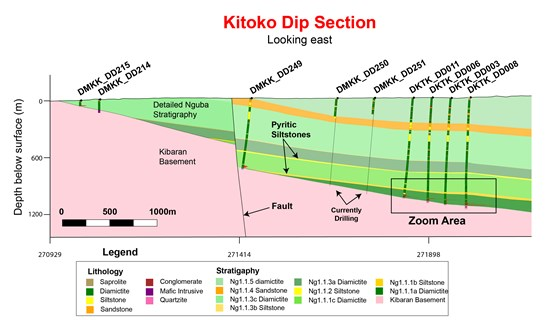
Figure 4. Kitoko dip section, looking east, of discovery holes DD003 to DD011
The Kitoko discovery has no surface expression in either geochemistry or geophysics.
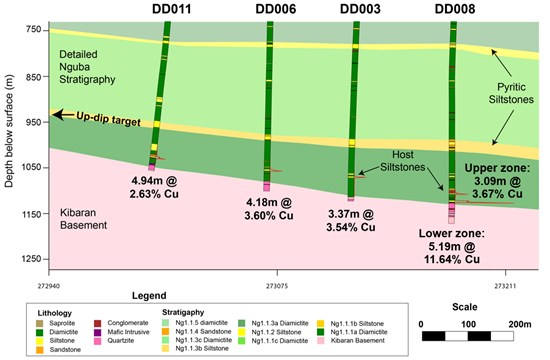
Figure 5. Zoomed in dip section, looking east as shown in Figure 4, of the Kitoko discovery, showing grade intervals at a 1% cut-off

Members of Ivanhoe Mines’ exploration team with drill core from the 2023 exploration campaign, which led to the high-grade Kitoko copper discovery.
Kitoko discovery follows release of maiden Makoko and Kiala Mineral Resources, further enhancing near-term development optionality for Western Foreland
On November 13, 2023, Ivanhoe announced the independently verified, maiden Mineral Resource estimates for the high-grade Makoko and Kiala deposits, also within its Western Foreland Exploration Project. The Kitoko discovery is within five kilometres of the Makoko deposit.
Makoko and Kiala are two distinct discoveries adjacent to the Kamoa-Kakula Copper Complex and continue Ivanhoe’s distinguished track record of making greenfield discoveries in this uniquely endowed geological terrain.
The Makoko Discovery remains open along an approximate west-east trending strike and there is potential for further resource expansion within the Makoko Exploration Area. High-grade copper mineralization has been outlined along a corridor that is currently approximately 700 metres wide and at least four kilometres in length. The Kiala Discovery remains open to the north, with the potential for parallel mineralized zones to be defined east and west of the current Mineral Resource.

Nique Karaj a Zeng, Geologist, Ivanhoe Mines, holding Kitoko core from hole DD008
Table 1: Assay composites at 1% and 2% copper cut-off for Kitoko drill holes received to date.
| 1% Cu Cut-off | 2% Cu Cut-off | ||||||||||
| Hole ID | From (m) | To (m) | Length (m) | True Tk (m) | Cu % | From (m) | To (m) | Length (m) | True Tk (m) | Cu % | |
| DKTK_DD003 | 1076.90 | 1080.28 | 3.37 | 3.37 | 3.54 | 1076.91 | 1080.28 | 3.37 | 3.37 | 3.54 | |
| DKTK_DD004 | 1071.10 | 1077.57 | 6.46 | 6.43 | 4.92 | 1073.00 | 1077.00 | 4.00 | 3.98 | 6.91 | |
| DKTK_DD005 | 1043.60 | 1047.00 | 3.40 | 3.40 | 0.71 | * | |||||
| DKTK_DD006 | 1065.30 | 1069.49 | 4.19 | 4.18 | 3.60 | 1065.30 | 1069.49 | 4.19 | 4.18 | 3.60 | * |
| DKTK_DD007 | 1088.53 | 1095.32 | 6.79 | 6.79 | 3.35 | 1088.53 | 1094.68 | 6.15 | 6.15 | 3.52 | * |
| DKTK_DD008 | 1134.51 | 1139.70 | 5.19 | 5.19 | 11.64 | 1134.51 | 1137.70 | 4.22 | 4.22 | 13.77 | * |
| 1117.84 | 1120.93 | 3.09 | 3.09 | 3.67 | 1117.84 | 1120.93 | 3.09 | 3.09 | 3.67 | * | |
| DKTK_DD009 | 1040.19 | 1044.00 | 3.81 | 3.76 | 0.97 | * | |||||
| DKTK_DD010 | 1103.18 | 1111.00 | 7.82 | 7.79 | 2.52 | 1105.24 | 1109.00 | 3.76 | 3.74 | 3.61 | * |
| DKTK_DD011 | 1038.86 | 1043.88 | 5.02 | 4.94 | 2.63 | 1038.86 | 1042.57 | 3.71 | 3.65 | 3.04 | * |
*Denotes values from the Ivanhoe Mine Exploration Laboratory Niton X-Ray Fluorescent (XRF) instrument
Table 2: Collar location and elevation for Kitoko drill holes.
Note: Collar locations and elevations are based on Ivanhoe Mines’s internal DGPS unit, apart from DKTK_DD010 which is based on a handheld GPS.
| Hole ID | Easting | Northing | Elevation | Azimuth | Dip |
| DKTK_DD003 | 273159.509 | 8793809.883 | 1236.639 | 340 | 85 |
| DKTK_DD004 | 271960.324 | 8793011.512 | 1253.813 | 340 | 85 |
| DKTK_DD005 | 271916.037 | 8793202.800 | 1251.572 | 340 | 85 |
| DTKK_DD006 | 273093.673 | 8793991.330 | 1241.017 | 340 | 85 |
| DKTK_DD007 | 272010.553 | 8792813.869 | 1256.779 | 340 | 85 |
| DKTK_DD008 | 273205.391 | 8793607.265 | 1244.222 | 340 | 85 |
| DKTK_DD009 | 272694.815 | 8793392.920 | 1251.959 | 340 | 85 |
| DKTK_DD010 | 272106 | 8792409 | 1284 | 340 | 85 |
| DKTK_DD011 | 273045.774 | 8794185.818 | 1239.359 | 340 | 85 |
117 total views , 2 views today


